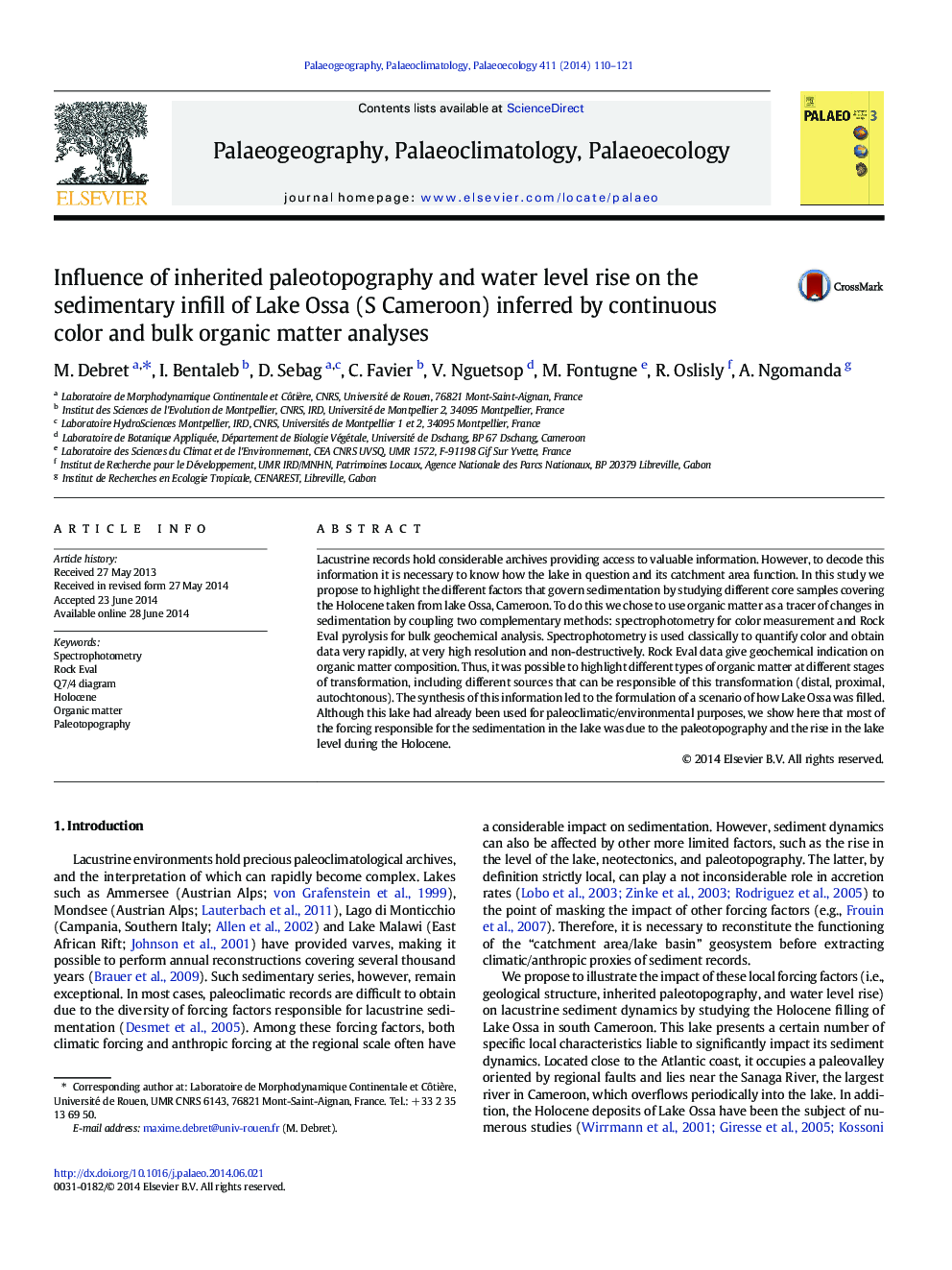| Article ID | Journal | Published Year | Pages | File Type |
|---|---|---|---|---|
| 6350034 | Palaeogeography, Palaeoclimatology, Palaeoecology | 2014 | 12 Pages |
Abstract
Lacustrine records hold considerable archives providing access to valuable information. However, to decode this information it is necessary to know how the lake in question and its catchment area function. In this study we propose to highlight the different factors that govern sedimentation by studying different core samples covering the Holocene taken from lake Ossa, Cameroon. To do this we chose to use organic matter as a tracer of changes in sedimentation by coupling two complementary methods: spectrophotometry for color measurement and Rock Eval pyrolysis for bulk geochemical analysis. Spectrophotometry is used classically to quantify color and obtain data very rapidly, at very high resolution and non-destructively. Rock Eval data give geochemical indication on organic matter composition. Thus, it was possible to highlight different types of organic matter at different stages of transformation, including different sources that can be responsible of this transformation (distal, proximal, autochtonous). The synthesis of this information led to the formulation of a scenario of how Lake Ossa was filled. Although this lake had already been used for paleoclimatic/environmental purposes, we show here that most of the forcing responsible for the sedimentation in the lake was due to the paleotopography and the rise in the lake level during the Holocene.
Related Topics
Physical Sciences and Engineering
Earth and Planetary Sciences
Earth-Surface Processes
Authors
M. Debret, I. Bentaleb, D. Sebag, C. Favier, V. Nguetsop, M. Fontugne, R. Oslisly, A. Ngomanda,
